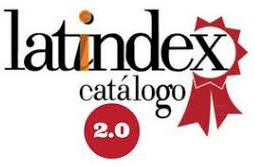| LA CALIDAD DE VIDA EN SINALOA, MEXICO: REFLEXIONES EN TORNO A LA APLICACIÓN DEL INTERNATIONAL WELL-BEING INDEX Y LA ESCALA DE CREENCIA DE CAPACIDAD (2002-2012) |
|
|
por Arita Watanabe Beatriz Yasuko
Universidad Autónoma de Sinaloa
|
Arita Watanabe Beatriz Yasuko (21-05-2013). LA CALIDAD DE VIDA EN SINALOA, MEXICO: REFLEXIONES EN TORNO A LA APLICACIÓN DEL INTERNATIONAL WELL-BEING INDEX Y LA ESCALA DE CREENCIA DE CAPACIDAD (2002-2012).
HOLOGRAMATICA - Facultad de Ciencias Sociales UNLZ, Número 18, V1, pp.3-20
ISSN 1668-5024
URL del Documento : https://www.cienciared.com.ar/ra/doc.php?n=1773
URL de la Revista : https://www.cienciared.com.ar/ra/revista.php?wid=3 |
 |
Documento Completo
(PDF) |
| Bytes |
|
|
|
RESUMEN: calidad de vida y bienestar subjetivo adscrito a la Universidad Autónoma de Sinaloa, México viene trabajando desde el 2002. El interés del grupo durante estos años, se ha centrado en analizar el bienestar de las poblaciones desde la Sociología y la Psicología y por ello, el modelo teórico que se fue conformando tomó como dimensiones de explicación de la misma, a la capacidad objetiva (niveles de ingreso y de educación); la capacidad subjetiva (salud biopsicosocial o bienestar psicológico y la creencia de capacidad) y el bienestar subjetivo (satisfacción por la vida y felicidad sentida).
Se ubicaron dos ejes de explicación de la calidad de vida: desde lo objetivo, las condiciones de vida de las personas y su capacidad objetiva (Secretaría de Desarrollo Social, 2002) y desde lo subjetivo, se consideró al bienestar psicológico y subjetivo. El primero relacionado con la capacidad emocional y el segundo, como el resultado de vida, cuyos indicadores son la satisfacción con la vida y la felicidad sentida (Diener et al, 1999; Cummins et al, 2001).
Del 2001 al 2004 se probó el International well-being Índex colaborando con el Dr. Robert Cummins de la Universidad Deakin en Australia. También en esos años se elaboró la escala de creencia de capacidad (De la Herrán y Arita, 2003). Ambos instrumentos permitieron probar un modelo de calidad de vida bajo un análisis factorial confirmatorio (Arita, 2006). Posterior a esto, el instrumento de calidad de vida (Arita, 2006, 2007) que contempla las dos escalas anteriores, fue utilizado para realizar investigaciones específicas relativas a ingreso y bienestar subjetivo; creencia de capacidad y nivel educativo; edad, creencia de capacidad y bienestar subjetivo; estrato de ingreso, condiciones materiales, creencia de capacidad y bienestar subjetivo en población adulta residente de la ciudad de Culiacán, Sinaloa, México. Finalmente, estudios sobre salud y bienestar subjetivo y calidad de vida y seguridad percibida. |
|
| PALABRAS CLAVE: calidad de vida, escala de creencia de capacidad, Índice internacional de bienestar subjetivo |
|
|
|
ABSTRACT: This paper aimed to describe the activity of the group research on quality of life and subjective well-being at Universidad Autónoma de Sinaloa, México, who has been working since 2002. The interest of the group over the years has focused on analyzing the welfare and well-being of populations trough out Sociology and Psycology sciences. The theoretical model was taken as dimensions conforming explanation of it, to the objective capacity (levels of income and education), the subjective capacity and subjective well-being (life satisfaction and happiness).
Two axes were located explanation of the quality of life: from the objective: the living conditions of people and their objective capacity (SEDESOL, 2002) and from the subjective, is considered the psychological and subjective well-being. The firs related to the emotional capacity and the second as the result of live, which are indicator of life satisfaction and happiness felt (Diener et al, 1999; Cumins et al, 2001).
From 2001 to 2004, tested the International Well-being Index collaborating with Fr. Robert Cummins of Deakin University in Australia. Also in those years was developed the belief scale capacity (De la Herrán y Arita, 2003). Both instruments allowed to test a model of quality of life under a confirmatory factor analysis (Arita, 2006).
After this, the quality of life instrument (Arita, 2006, 2007) which includes the two previous scales, was used to perform specific research on income and subjective well-being; belief and education capacity; age, ability and belief of capacity; income strata, material conditions, belief of capacity and subjective well-being. All the studies with adult population of the city of Culiacán, Sinaloa, México. Also, some studies about health and wellbeing and perception of segurity. |
|
| KEYWORDS: quality of life, belief of capacity scale, International well-being index |
|
|
Volver
|






